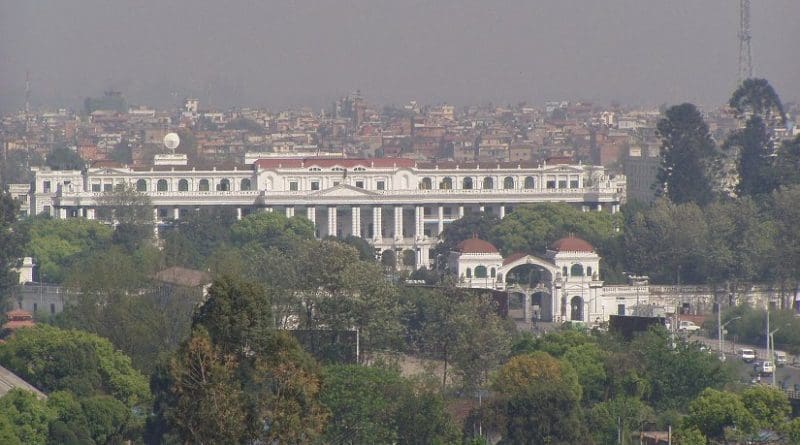Nepal: Post Election Tremors – Analysis
By SAAG
By Dr. S. Chandrasekharan
It looks that it may take a month for the new government to take over. The delay is mainly due to failure of the political parties to reach a consensus on whether the mode of election to the Upper House should be by “Single transferable Vote” system recommended by the Nepali Congress or by majority vote system as demanded by the UML. Curiously, the Maoist centre which is a part of the government still and now part of the Left Alliance also took the side of the Nepali Congress and pressed for the passing of the ordinance that recommended the STV system.
Finally, after holding a meeting with PM Deuba and the UML leader and former Speaker Subas Nembang, President Bidya Dev Bhandari signed the ordinance on 30th December thus paving the way for the elections to the National Assembly and later for the formation of a new government.
Differences within the Grand Alliance
Meanwhile, significant differences have emerged between the two major parties of the Grand Alliance. The junior partner – the Maoist Centre led by Dahal has begun to openly criticise the UML leadership both on the unification, in the formation of the government and even on sharing of important posts.
The differences are mainly:
1. Whether the unification and formation of the government should be together simultaneously or separately to be considered? The UML is for immediate formation of the government and their view is that unification can wait. The Maoist Centre on the other hand wants both to be done simultaneously. While the government can be formed easily, unification is going to be a complicated issue. It is learnt that the rank and file of the UML are totally opposed to Dahal taking over as Chairman of the unified party and the UML may even face a revolt.
2. The General Secretary of the UML started a controversy that K.P.Oli should not only lead the government but the party also. The Maoist centre wants the principle of “one person- one post” to be followed strictly. There are four important posts to be shared- the President, Prime Minister, the Speaker and the Party Chairman. The Maoist Centre is for a package deal to share the posts equally. The UML would agree to share the Prime ministership by rotation but not the post of party leadership. The problem really is in the internal dynamics of both parties in managing and persuading their middle leaders to accept the new equation!
Composition of the National Parliament
The final position of various parties in the Parliament is likely to be as follows.
UML – 121
Nepali Congress 63
Maoist Centre 53
SSF(N) 17
RJP (N) 16
Independents 5
SSF (N) and RJP (N) are Madhesi based parties.
This would mean that the UML will not have a majority of its own in the Parliament unless it ties up with the Maoist Centre or with a combination of other parties. Dahal therefore became suspicious when the UML leader Oli took the initiative to meet the Madhes parties separately and requested them to join the government. He complained in one of the open meetings that Oli was doing it without consulting him! UML sources say that Dahal was consulted. Subsequently in another gathering at Nawal Parasi, he openly said that the UML leadership has turned to him only after SSF-N of Upendra Yadav rejected the proposal of joining the government!
The two top leaders Oli and Dahal met subsequently on the 27th, but the discussion was on the unification of the parties and not on the government! Kunda Dikshit a well known analyst has said that both Oli and Dahal have suspicion and intrigue in their DNA. Perhaps what he meant was that both having such a character may find it difficult to agree on complicated issues.
If we take the last few years into consideration, I would rather differ – Dahal has been seen to be a person who constantly shifts the goal posts and has proven to be an opportunist whereas Oli has proved himself to be a straight talking and frank person who does not mince words even if it is unpleasant.
The Madhesi Groups
Oli has approached both the Madhesi groups for joining the government and both appear to be willing to join on certain conditions. Upendra Yadav was the first to start from the block and may join the government if he is able to convince Oli to make the constitutional amendments he had asked for. A more positive note was struck by Raj Kishor Yadav of the RJP(N) when he said that they can be part of the UML led government if its chairman K.P. Oli stood positively towards constitutional amendment. He added that the constitutional amendment will not only address the demand of Madhes but will also resolve the current political deadlock in the country.
Indeed, it would be in the interest and stability of the country that the two Madhes groups join the government. It will be in the interest of India too. This would give some freedom to the UML also which need not be too dependent on the Maoists and its leader Dahal.

